
|
|
|
ROBERT HUOT: "Four Decades in Many Media" 19 octobre – 18 novembre 2006 COMMUNIQUÉ DE PRESSE
ROBERT HUOT
QUATRE DÉCADES EN BEAUCOUP DE MÉDIAS
19 octobre – 18 novembre 2006
Robert Huot a √©t√© introduit √Ý la galerie par Carl Andre, et √©galement par Hollis Frampton . Carl Andre a dit que son nom est souvent associ√© √Ý Hollis Frampton et Frank Stella; mais qu‚Äôil existe un autre ¬´ trio ¬ª qui s‚Äô√©tait form√© apr√®s cela avec Robert Huot et Dough Olson.
C‚Äôest Robert Huot qui a envoy√© l‚Äôinformation que Hollis Frampton l‚Äôavait accompagn√© dans ses d√©buts de film. Il en parle dans un tr√®s beau texte d‚Äôintroduction de ses films √Ý la galerie Paula Cooper en 1974.
¬´ J‚Äôai commenc√© la peinture s√©rieusement, dit Robert Huot, au d√©but-milieu des ann√©es 50 (54-54) et ai eu ma premi√®re exposition personnelle en mai 1957. J‚Äô√©tudiai la chimie au Wagner College et me suis mis √Ý fr√©quenter la ¬´ sc√®ne de l‚Äôart ¬ª, tra√Ænant au Cedar Bar avec des artistes comme Franz Kline. Ma vie fut chang√©e √Ý jamais. ¬ª
« (…) un des peintres radicaux de la nouvelle génération les plus inventifs et rigoureux » a écrit Hollis Frampton dans les années 70.
Le catalogue de Robert Huot de 1969 √Ý la galerie Paula Cooper montre des travaux qui font r√©f√©rence √Ý ceux que Carl Andre a qualifi√© de ¬´ presque invisibles ¬ª.
Robert Huot dit qu‚Äôen 1969 il a ¬´ achet√© une vieille ferme dans le comt√© Chenango de l‚Äô√âtat central de New York, l‚Äôai peu √Ý peu r√©nov√©e, r√©par√© les barri√®res et remis les pr√©s en graine. J‚Äô√©l√®ve du b√©tail de traie, Jersey et Holstein, et fais pousser mon propre foin. ¬ª
C‚Äôest √Ý la fin des ann√©es 60 que Robert Huot a commenc√© √Ý faire des films. Hollis Frampton a √©crit : ¬´ Il essaye non pas d‚Äôexploiter le film, mais de d√©couvrir ce que le film est . ¬ª
Le catalogue Robert Huot Diaries (Barrett Gallery, Utica College, Utica, New York, 1979) pr√©sente √Ý la fois ses films de ¬´ Journal ¬ª (¬´ Je pense qu‚Äôil est clair que mon art est devenu plus ouvertement personnel. En g√©n√©ral je n‚Äôaimais pas du tout les acteurs mais je ne savais pas tr√®s bien pourquoi. Je leur reconnaissais le m√©rite de se lever et dire ¬´ Regardez-moi ¬ª, mais √ßa m‚Äôemmerdait. √Ä la fin je me suis rendu compte que c‚Äô√©tait ce que je voulais ; c‚Äôest √Ý dire, je voulais que les gens me voient ! Mais je ne voulais, ni ne veux pas, √™tre un acteur s√©par√© du public. Je veux que vous me voyiez et ce que j‚Äôai fait et √™tre avec moi. ¬ª ‚Äî Robert Huot, 1974) ; mais √©galement ses peintures de Journal qui se d√©roulent comme une immense page dans l‚Äôespace d‚Äôexposition. ¬´ Les Journaux sont un enregistrement visuel de ce qui se trouve l√Ý, arrive, a lieu, est projet√©, surgit tout √Ý coup ‚Äî passe d‚Äôun jour √Ý l‚Äôautre avec aussi peu de pr√©conception que possible (pour moi). Ils sont surprenants-√©vidents, h√©sitants-aggressifs, maladroits-habiles, grands-terre √Ý terre. ¬ª ‚Äî Robert Huot, ‚ÄòStatement‚Äô, dans Robert Huot Diary Paintings, State University of New York, Albany, New York, 1976.
Puis un autre catalogue de 1998 (Robert Huot Paintings From The 90‚Äôs, Hunter College of the City of New York) montre de grandes peintures triangulaires, puissantes et color√©es, comme de grands signes qui renvoient √Ý autre chose qu‚Äôeux-m√™mes et poss√®dent une force persistante d‚Äôimpact visuel.
De cette foisonnante diversit√© ‚Äî Robert Huot a aussi cr√©√© dans les ann√©es 80 un groupe de musique rock-jazz, Chameleon, o√π ¬´ toutes choses se passaient ouvertement ¬ª ‚Äî il ressort notamment une incroyable richesse d‚Äôexploration et une extraordinaire intelligence cr√©ative, mais o√π l‚Äôon assiste aussi, comme dans l‚Äô√©volution de la femme nue de Black and White Film ou de celle de Sound Movie, √Ý une merveilleuse d√©licatesse et pr√©cision de ¬´ toucher ¬ª dans l‚Äô≈ìuvre d‚Äôart de Robert Huot, qui r√©sonne comme une forme de gr√¢ce trouv√©e au fond des choses.
L‚Äôexposition Robert Huot Quatre d√©cades en beaucoup de m√©dias √Ý la galerie Arnaud Lefebvre montrera une r√©trospective de petite taille du travail de Robert Huot.
Vernissage le jeudi 19 octobre de 18 h √Ý 20 h. Exposition jusqu‚Äôau 18 novembre 2006.
Voir aussi : http://www.roberthuot.com
PRESS RELEASE ROBERT HUOT FOUR DECADES IN MANY MEDIA October 19 – November 18, 2006
Robert Huot was introduced in the gallery by Carl Andre, and also by Hollis Frampton. Carl Andre said that his name is often associated with Hollis Frampton and Frank Stella; but there exists another “trio” which was formed after that with Robert Huot and Dough Olson.
This is Robert Huot who sent the information that Hollis Frampton had accompanied him during his first films. He says this in a very beautiful text of introduction to his films at the Paula Cooper Gallery in 1974.
“I started painting seriously, says Robert Huot, in the early-mid 1950’s (53-54) and had my first one man show in May 1957. I was studying chemistry at Wagner College and began to get involved in the “art scene”, hanging-out at the Cedar Bar with artists like Franz Kline. My life was forever changed.” “(…) one of the most inventive and rigorous of the younger generation of radical painters” wrote Hollis Frampton in the 70’s.
Robert Huot’s 1969 catalogue at the Paula Cooper Gallery shows works which refer to those Carl Andre qualified as “nearly invisible.”
Robert Huot says in 1969 he “bought an old farm in Chenango County in Central New York. Over the years, I’ve restored the buildings, fixed the fences, and reseeded the meadows. I raise dairy cattle, Jersey and Holstein, and put in my own hay.”
It is at the end of the 60’s that Robert Huot began to make films. Hollis Frampton wrote: “He tries, not to exploit film, but to find out what film is.”
The catalogue Robert Huot Diaries (Barrett Gallery, Utica Collage, Utica New York, 1979) presents both his Diary Films (“I think it is clear that my art has become more overtly personal. I used to have a strong dislike for performers but I didn’t quite know why; I gave them credit for getting up and saying “Look at me,” but it pissed me off. Finally I realized that was what I wanted; that is, I wanted people to see me! But I didn’t and don’t want to be a performer separated from an audience; I want you to see me and what I’ve done and to be with me.”—Robert Huot, 1974); but also his Diary Paintings which unroll like an immense page in the exhibition space. “The Diaries are a visual record of what happened to be there, go by, occur, be projected, pop up—go down from day to day with as little preconception as possible (for me). They are surprising-obvious, hesitant-aggressive, awkward-skillful, grand-mundane.”—Robert Huot, ‘Statements,’ in Robert Huot Diary Paintings, State University of New York, Albany, New York, 1976.
Then another catalogue of 1998 (Robert Huot Paintings from the 90’s, Hunter College of the City of New York) shows large triangular paintings, powerful and colored, which refer like big signs to other things than themselves and possess a lasting strength of visual impact.
Among this multifarious diversity—Robert Huot also created in the 80’s a rock-jazz music band, Chameleon, in which “all things occurred openly”—it appears as an amazing richness of exploration and an extraordinary creative intelligence, but in which one also attends, like in the evolution of the naked woman in Black and White Film, or of the one in Sound Movie, a marvelous delicacy and precision of “touching” in Robert Huot’s artwork, that resounds like a form of grace found at the bottom of things.
The exhibition Robert Huot Four Decades in Many Media at the gallery Arnaud Lefebvre will show a small-size retrospective of Robert Huot’s work.
Opening on October 19, 2006, 6-8 pm. Exhibition until November 18, 2006. See also http://www.roberthuot.com
|
Exhibit Images 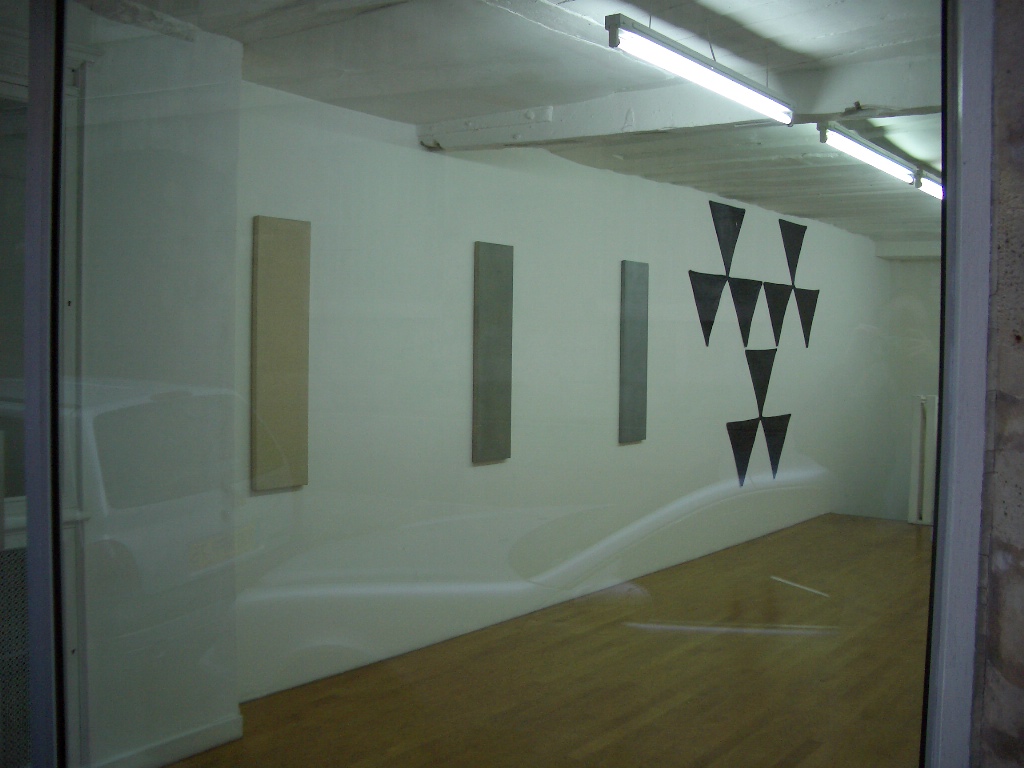 ROBERT HUOT 1 Vue d'ensemble ¬© Robert Huot 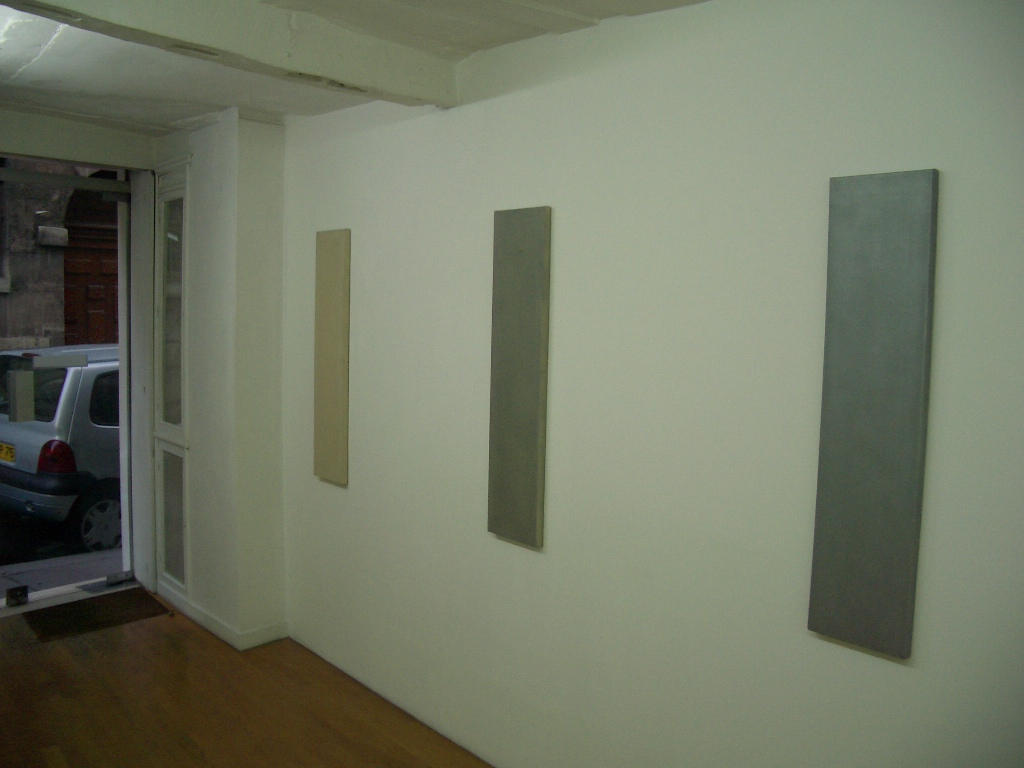 ROBERT HUOT 2 "Relative Density", 1967, aluminium paint on canvas, 3 parts 40” x 10” (3 parties de 101,5 x 25,5 cm avec 101,5 cm entre chaque) ¬© Robert Huot 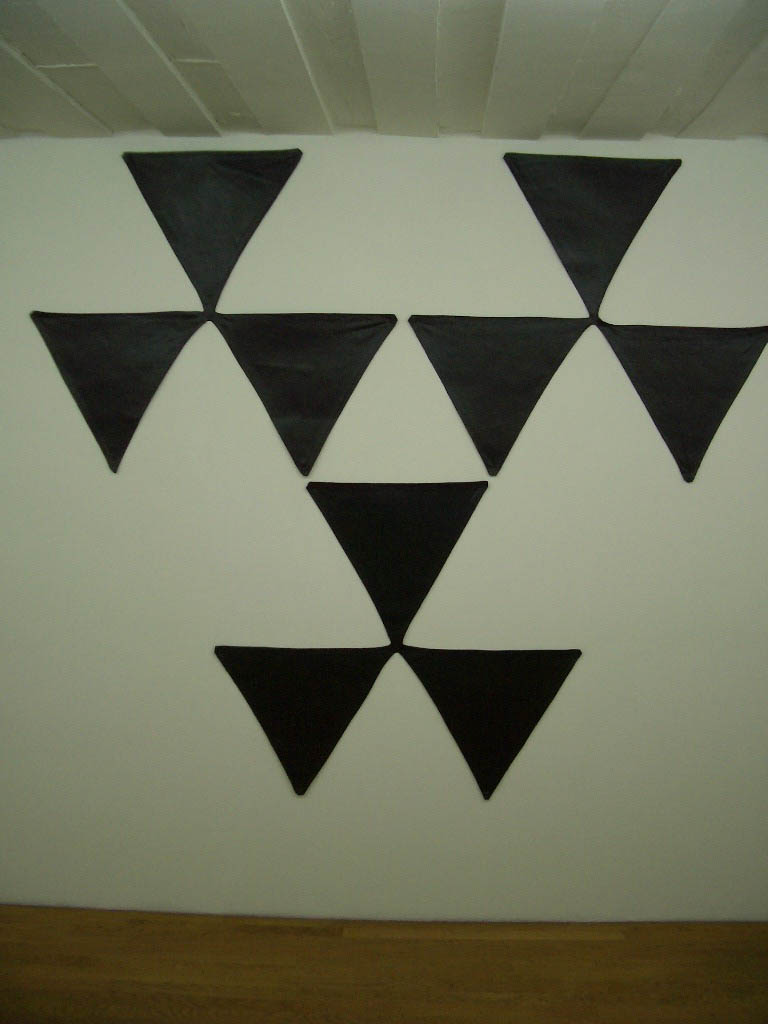 ROBERT HUOT 3 Bikini for Kinne, 1980-81, acrylic on canvas, 3 parts, Total size 108’ x 108’ x 108 (taille totale 274 x 274 x 274 cm) ¬© Robert Huot  ROBERT HUOT 4 Vue d'ensemble ¬© Robert Huot  ROBERT HUOT 5 "FL", Sept. 1964, acrylic on canvas, 32” x 32” (81 x 81 cm) "Little Chris", Dec. 1964, 26” x 32” (66 x 81 cm) ¬© Robert Huot 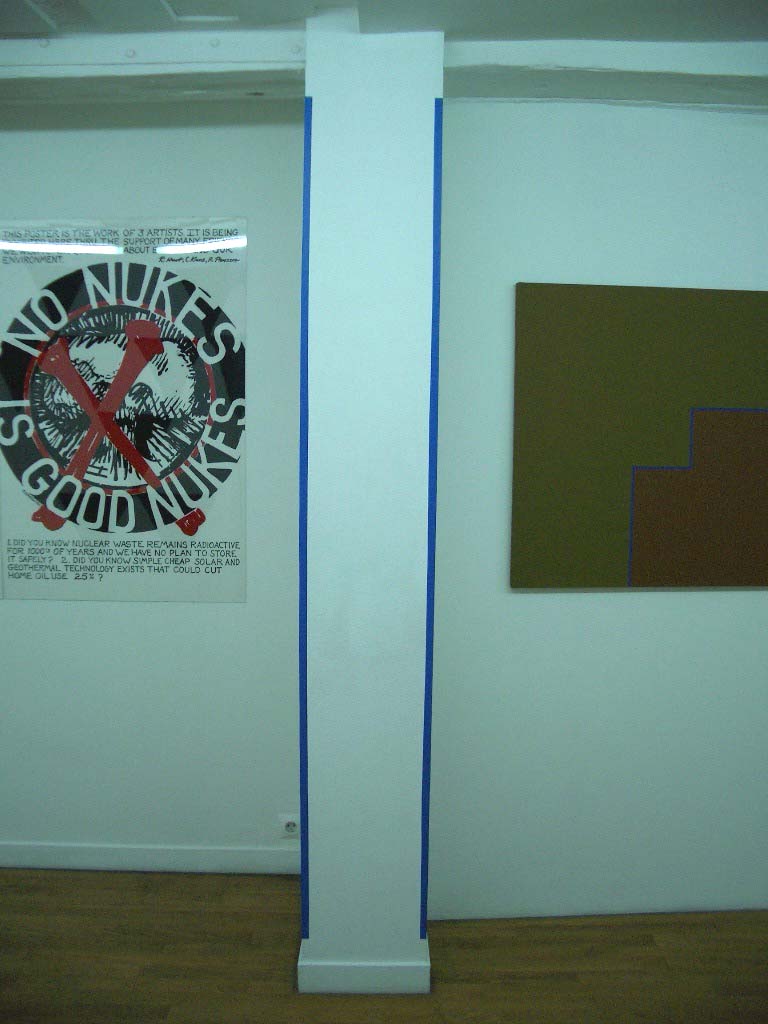 ROBERT HUOT 6 2" T’s Tape Pieces", 1969, Blue Pro Mask tape, taille variable ¬© Robert Huot 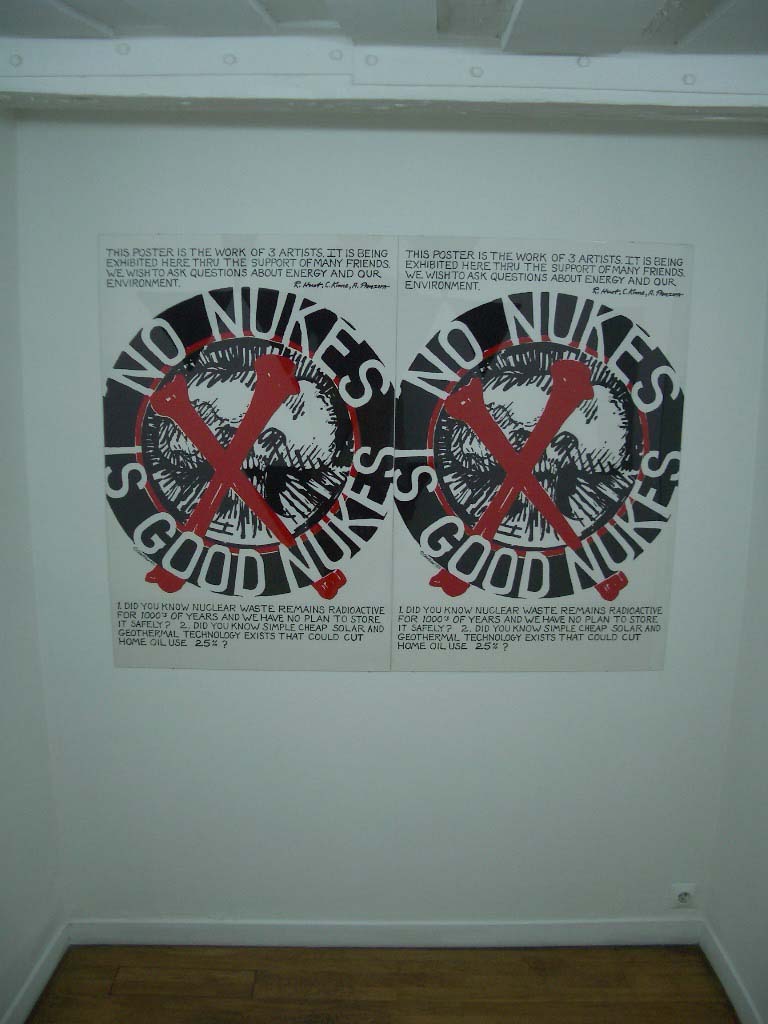 ROBERT HUOT 7 2 "No Nuke", silkscreen posters (2 affiches s√©rigraphi√©es), 46” x 30” (114,5 x 75,5 cm) ¬© Robert Huot  ROBERT HUOT 8 "Vassar Tape Piece", 1969, Silver Duct tape, taille variable ¬© Robert Huot 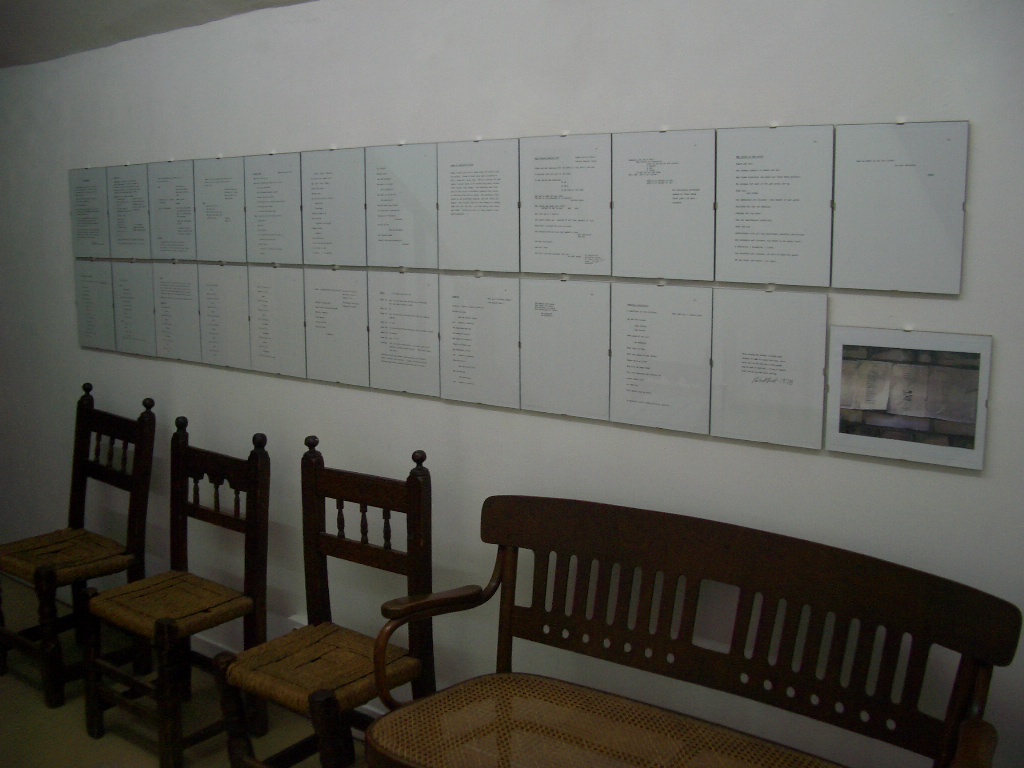 ROBERT HUOT 9 "The Mercenaries", a musical review, November 1976- February 1977, 22 pages + 2 pages voyage en Chine. ¬© Robert Huot 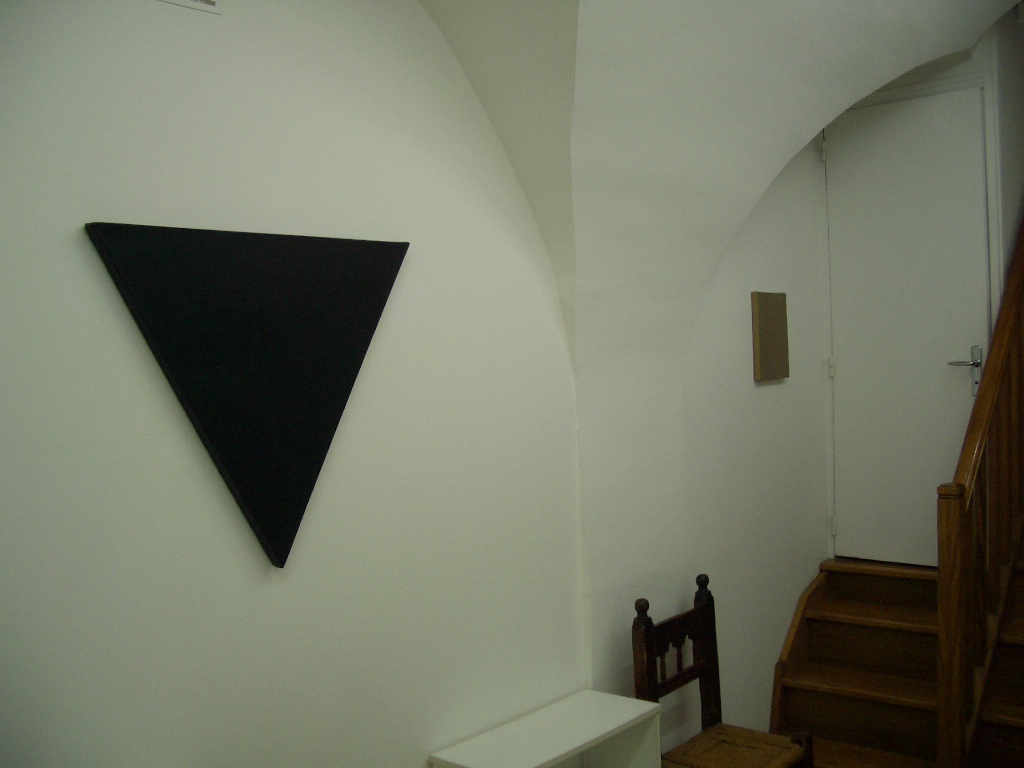 ROBERT HUOT 10 "Based On Four Centers", Oct. 1997, acrylic + charcoal on canvas, 26” x 30” ou 30” x 30” x 30” (66 x 76 cm ou 76 x 76 x 76 cm) ¬© Robert Huot 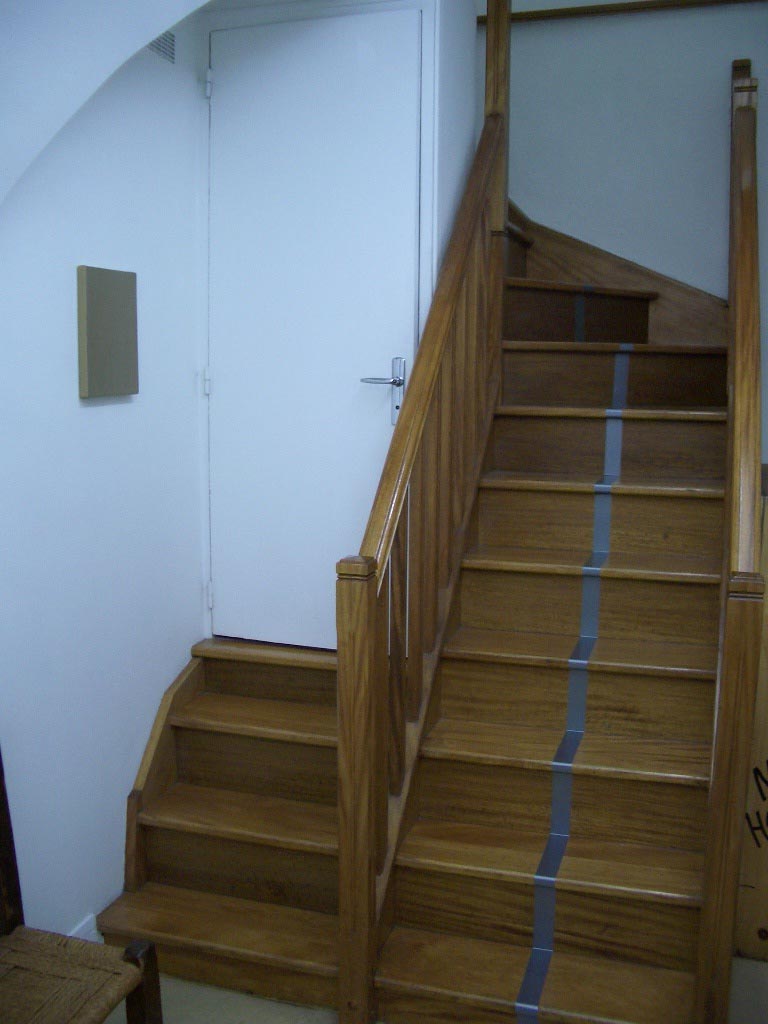 ROBERT HUOT 11 "Brass", 1967, metallic paint on canvas, 12” x 10” (30,5 x 25, 5 cm) ¬© Robert Huot |